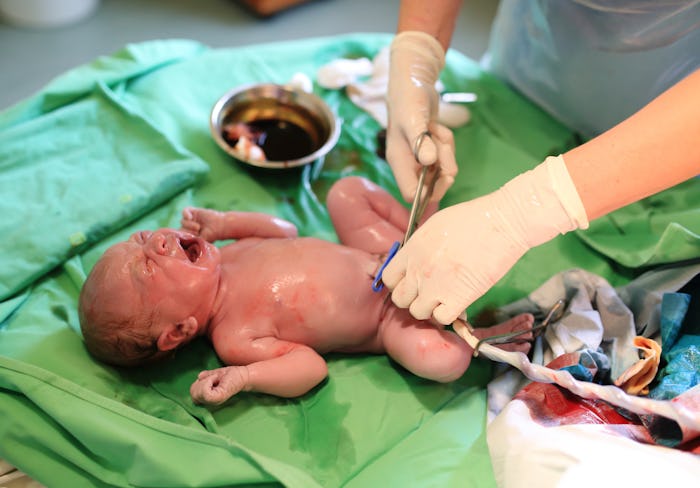Life

Delayed Cord Cutting Could Benefit Your Baby
The cutting of the umbilical cord is a huge moment in the birthing process that’s been done the same way for a long time. The act itself is strictly clinical and performed to physically separate the baby from its mother. Sometimes the cutting of the cord is made into a memorable moment where the other parent, who didn’t give birth, is given the opportunity to be involved in the birthing process. Either way it’s done, the cord cutting is typically done quickly, but recently parents have demanded it wait a bit. So what is delayed cord cutting and why would someone want to do it?
Delayed umbilical cord clamping, or cutting, means the cord is not severed earlier than one minute after birth, according to the World Health Organization (WHO). The organization recommended delayed cord cutting for newborns, and especially for premature babies. As explained on the site, delaying umbilical cord cutting could could improve maternal and infant health. A 2015 study published in JAMA Pediatrics found that babies who experienced delayed cord cutting, received a small boost in neurodevelopment. Dr. Heike Rabe, a neonatologist at Brighton & Sussex Medical School in the United Kingdom explained in an NPR article that delaying the cord clamping allows more blood to transfer from the placenta to the baby, which can increase the infant’s blood volume by up to a third. The iron in the blood is increased as well, which is a positive result because iron is essential for healthy brain development. Rabe is quoted in the article as saying:
The extra blood at birth helps the baby to cope better with the transition from life in the womb, where everything is provided for them by the placenta and the mother, to the outside world. Their lungs get more blood so that the exchange of oxygen into the blood can take place smoothly.
Studies done prior to the 2015 JAMA study have shown higher levels of iron being associated with positive effects in infants. Currently, no study has been conducted yet to measure the results of delayed cord clamping past the infant stage, but that doesn’t mean the idea should be dismissed.
In a CNN interview, neonatologist Anup Katheria, director of the Sharp Mary Birch Neonatal Research Institute in San Diego, said she wants to find alternative ways to help very premature infants who need help breathing after birth.
“The practice of helping babies breathe while waiting to clamp the umbilical cord has been around for a long time; it makes sense for the sickest infants,” Katheria said. “We’re focused on producing evidence that shows the benefits. We think this could become the foundation for practice changing resuscitation techniques, transforming outcomes for the most critical of newborns nationwide.”
The WHO agreed that delayed cord clamping would be best for critical newborns and seemingly healthy infants alike. As recommended on the organization’s site, umbilical cords should not be clamped earlier than about three minutes. Waiting three minutes is not common practice yet, but it’s advised if you’re interested in it for your own baby, simply ask your doctor and see if they’d be willing to do it.